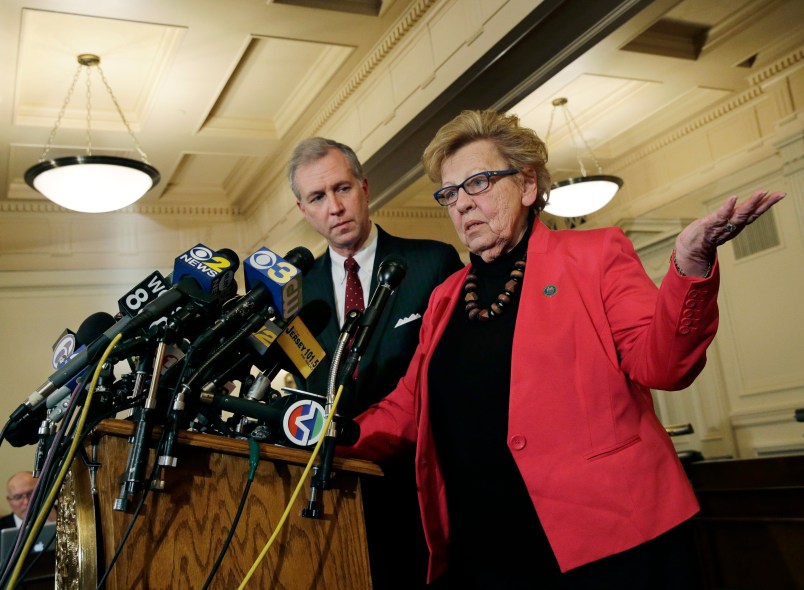There are things we know about the George Washington Bridge lane closing scandal. We learned weeks ago about the basic what, where, and when. Access lanes to the George Washington Bridge in Fort Lee, N.J. were closed for several days in September, causing a massive traffic jam in the town.
What we still don’t know is why the lanes were closed to begin with. State lawmakers have spent months investigating. Journalists have written hundreds of articles about the story. The release in January of thousands of pages of documents related to the closures revealed much about who was involved — and provided proof that aides to Gov. Chris Christie (R) participated in discussions about the closures. But none of this has brought us much closer to identifying the actual motive behind the deed.
On Friday, an attorney for the former Port Authority of New York and New Jersey executive who oversaw the closures released a letter that many considered a bombshell, or at least a “semi-bombshell.” In the letter, an attorney representing David Wildstein, the former executive, alleged that “a person within the Christie administration communicated the Christie administration’s order that certain lanes on the George Washington Bridge were to be closed, and evidence exists as well tying Mr. Christie to having knowledge of the lane closures, during the period when the lanes were closed, contrary to what the governor stated publicly in a two-hour press conference.” And yet, even as it insinuated that Christie had some special knowledge about the closures, the letter left walked around any discussion of motive.
In a statement released Friday responding to the Wildstein letter, the Christie administration denied knowing “whatever Mr. Wildstein’s motivations were” for closing the lanes, and tried to argue that the letter’s assertions matched what Christie has previously said.
“Mr. Wildstein’s lawyer confirms what the Governor has said all along – he had absolutely no prior knowledge of the lane closures before they happened and whatever Mr. Wildstein’s motivations were for closing them to begin with,” the statement said.
In the absence of concrete evidence, theories have been introduced by various stakeholders and observers. At a press conference on Jan. 9, Christie was still clinging to the story that his administration had offered early on: that the lanes were closed as a result of a traffic study. Democrats in New Jersey, meanwhile, spent months suggesting that the lanes were closed in retaliation against the mayor of Fort Lee, Mark Sokolich, a Democrat who declined to endorse Christie’s re-election bid last year. That theory appears to have lost momentum, for now. Another theory suggests that the lane closures were somehow connected to a billion-dollar real estate development project underway in Fort Lee, near the foot of the bridge. But no explicit link has yet been found connecting the lane closures to the development project.
On Monday, state lawmakers in New Jersey began receiving documents in response to the 20 subpoenas they sent out as part of their investigation. The last round of subpoenas netted thousands of pages. The latest subpoenas could result in an even taller stack of paper. Inside, investigators might find clear evidence of who ordered the lane closures, and why. Or they might not.










